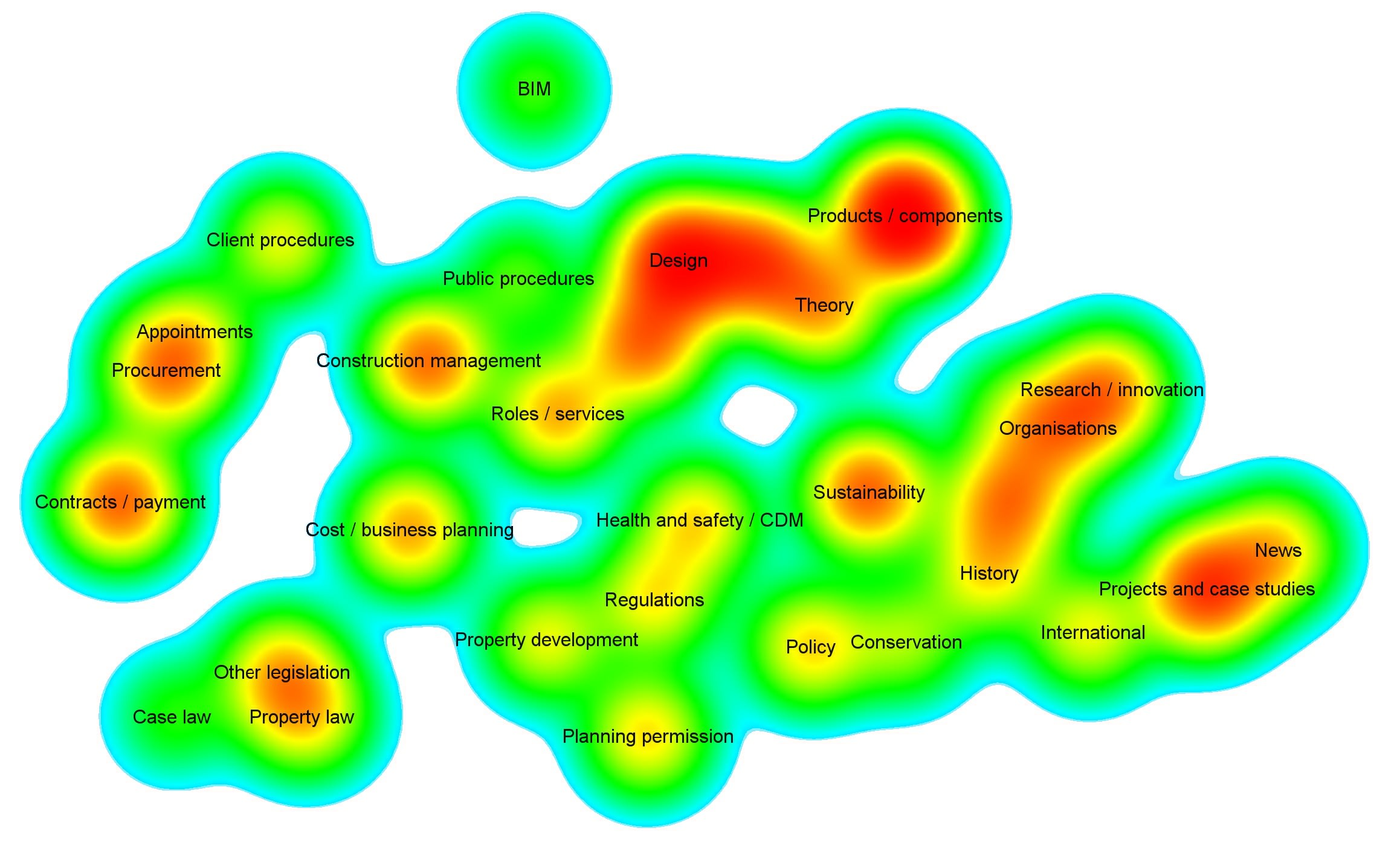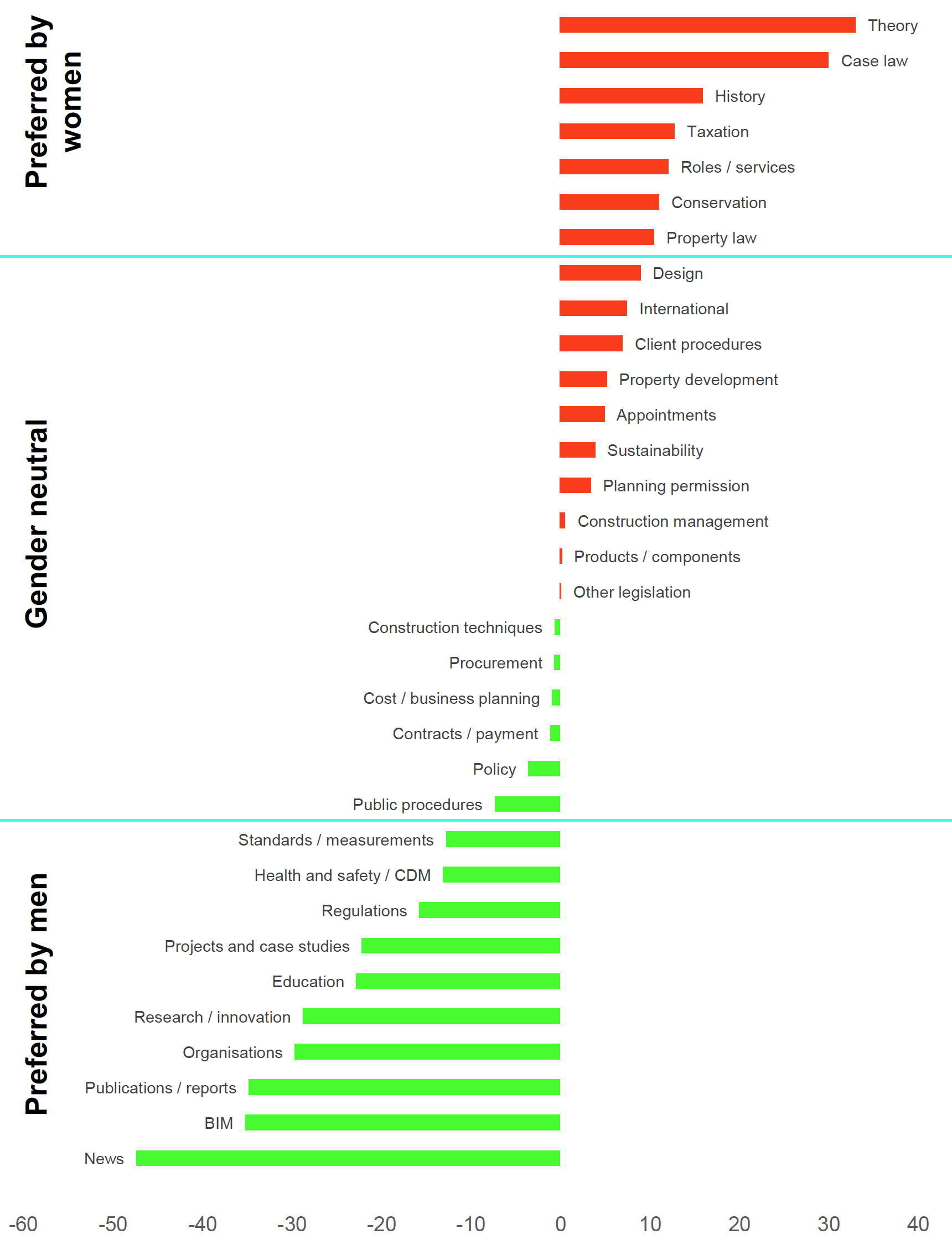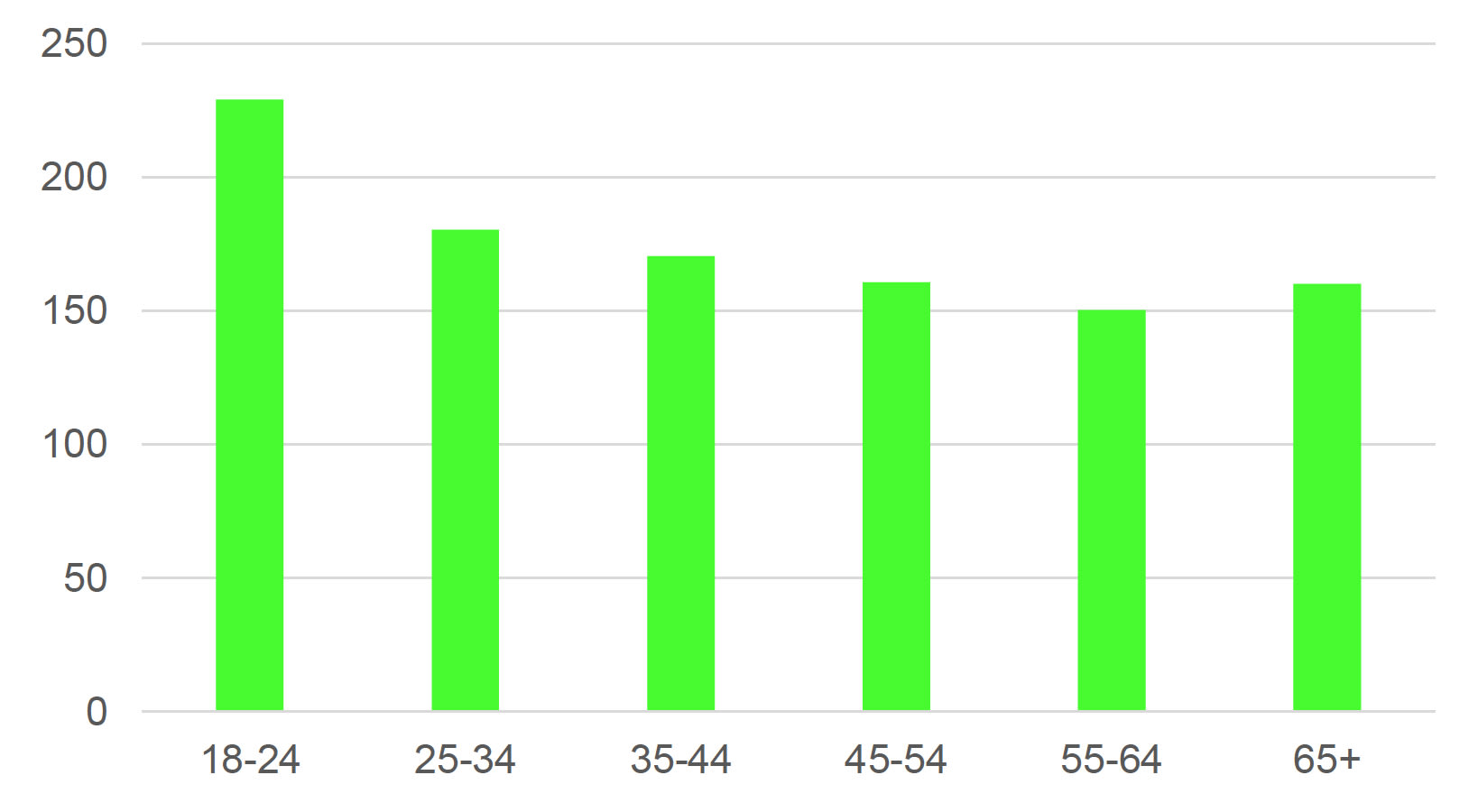BIM knowledge and practitioners are “isolated” from the rest of the industry a new study concludes.
The team behind Designing Buildings Wiki – the knowledge resource for the built environment – analysed six million pieces of data generated from users of the site to find out knowledge needs and how it was connected across subjects. The results were unveiled at the launch in London earlier this week.
Architect Dr Gregor Harvie, co-founder of the Wiki, said: “We cross-referenced our 5,000 articles with 6 million data points, scrutinising a range of factors including: connections between subjects, the popularity for subjects, the number and duration of views, and the age, sex and location of readers.
“Our findings have generated a series of never-before seen maps of construction industry knowledge, allowing us to draw some surprising conclusions about what knowledge is available, what knowledge people want and what needs to change. This report asks a crucial question – is construction industry knowledge fit for purpose?

Big data exposes a widening construction knowledge gap

Each article in Designing Buildings Wiki is assigned to one or more of 42 subject areas. The relationships between those subject areas were processed to create the cluster map below. The colour and size of the clusters indicates the number of articles in that subject area, and the proximity of the subjects indicates how closely they are related. It is clear from this “heat map” how that unlike other topics, BIM is not connected.

“What is very clear from the ‘heat’ maps we generated is that BIM is very isolated and is not connected with other subjects and is probably accessed by a breed of BIM experts, rather than embedded as a need across the industry.
“Generally speaking the 25-34 age group are interested but this goes down with age. I think that presenting BIM as a very clever version of CAD is not that helpful.
“If it were seen as more of a quality management process, effectively standardising what most people do already, then people might be more engaged with it.
“It’s a bit like sustainability when that started – it was seen as something that was isolated and for the experts, but now it is embodied into every day working practices.”
The analysis also reveals the gulf between what people need in terms of information and what is available.
Garvie added: “The report makes clear that industry’s knowledge creators continue to focus on niche research aimed at making the top-performing 1% of the industry better. But it is leaving the other 99% to fend for themselves.”

Men versus women

Whilst overall, there were fewer page views from women compared to men, this is only true from the mid-20s onward. Before that, the proportions are more equal, and if those women can be encouraged to stay in the industry, this may be a positive sign for the future.
Women appear to be more interested in subjects such as “theory” and “case law”, while they are less interested in subjects such as “news” and “BIM”.
While the analysis does not reveal any gender bias in the subject areas that are written about, in that there is not a clear emphasis on “male” or “female” subjects, an understanding of gender interest in specific subjects could allow the creation of targeted knowledge, for example to encourage women to remain in the industry.
Women, on average spent, 15% longer reading articles than men.

The report criticises the industry focus on niche research that does not impact on professional practice and calls for strategic leadership to oversee the creation of more practical guidance. Most importantly, it suggests that unless critical knowledge is made freely available, the industry will continue to make mistakes.
Designing Buildings Wiki was created in 2012 by Dr Gregor Harvie and project manager David Trench CBE FCIOB to make cross-discipline construction knowledge available to everyone for free. It now includes more than 5,000 articles and is used by 3.5 million people a year, making it one of the most popular construction industry websites.
Trench said: “It is well established that construction performance in the UK lags behind other industries and other countries, this report gives some clues about why this is and what could be done to turn things around.”
Andrew Morris, senior partner at Rogers Stirk Harbour and Partners, said: “The likely impact of Brexit on the construction industry means it is vitally important to encourage the continued sharing of information and ideas, and ensure there are coordinated programmes of education and research.
“This timely report offers a number of strategic recommendations that can steer knowledge creation and promote the dissemination of knowledge to help the industry maintain its performance and improve its openness through a period of unprecedented change.”
The key findings of the report are:
- The industry is lacking the strategic leadership needed to coordinate the creation and dissemination of knowledge.
- The emergence of the internet has fundamentally changed the way practitioners access knowledge, but the industry has not kept up.
- Knowledge that is difficult to understand, buried in long documents or locked behind pay walls, will not be used – even if it is critically important.
- Practitioners need accessible, practical, easy-to-use guidance to help them carry out everyday activities.
- In the wake of the Edinburgh schools defects and the fallout from the Grenfell Tower tragedy, the report suggests the industry needs to get organised and stop leaving the dissemination of knowledge to chance – or more mistakes will be made.
Younger versus older users
The data confirms that younger generations are more likely to look for knowledge online than older generations. This may indicate a specific need for knowledge, particularly around the late 20s and early 30s, or may indicate a greater willingness to seek out and rely on online sources of knowledge rather than more traditional sources.
There is also a notable difference in the amount of time spent reading articles by different age groups.

What is very clear from the ‘heat’ maps we generated is that BIM is very isolated and is not connected with other subjects and is probably accessed by a breed of BIM experts, rather than embedded as a need across the industry.– Dr Gregor Harvie, Designing Buildings Wiki
Comments
Comments are closed.














I agree that knowledge must be freely available to the industry to foster the integrated project delivery approach that we all want.
With reference to the ‘BIM island’ on the heat map this could be attributed to the lack of knowledge of the existence of the Designing Buildings Wiki website by the wider AEC community particularly buy those more experienced technical engineers and Architects who may use other sources of information. As an engineer I am more likely to use databases provided by my professional institution library, government or academic websites, and then to specialist supplier websites.
As someone who has followed and been active in the BIM community for quite a few years, I think that the little BIM dot shown in this diagram is like Dr. Who’s TARDIS. That is: it’s much bigger on the inside than it looks here.
Anyone in BIM could tell you that everything shown outside it (and within DBW) is actually just part of the regular BIM day job. So, sorry, but a BIM person like myself would draw the same picture with DBW in the little, isolated dot.